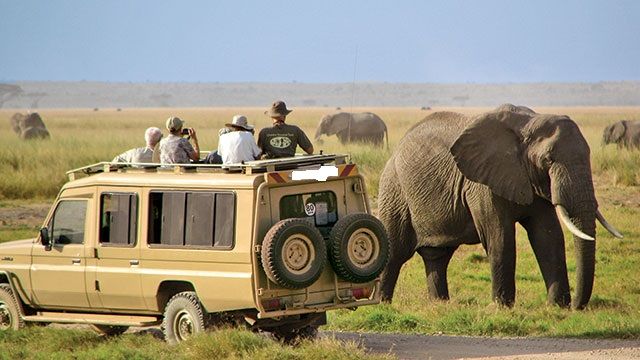Targeting more tourists during the next two years, the Tanzania National Parks Authority is currently upgrading its tourist infrastructure.
This is meant to ensure the provision of the best services to visitors touring its parks and other places connected to nature and wildlife conservation. Tanzania National Parks is the conservation custodian for 22 protected wildlife and premier parks which pull crowds of tourists every year, and now the National Parks Authority wants to attract five million tourists between 2025 and 2026 from the estimated 1.5 million tourists visiting Tanzania this year.
National Parks’ Conservation Commissioner, Mr. William Mwakilema outlined strategies to boost the number of tourists visiting Tanzania and said that the National Parks Authority is improving the tourist services infrastructure in southern Tanzania for quick accessibility to visitors. The majority of tourists visiting Tanzania flock to the national parks located in the Northern Circuit because of good infrastructure, mostly roads, airports, and a wide range of logistics to their travel destination.
Tanzania’s government’s target is set to gain about six billion (US$ 6 billion) in the forthcoming years from the current, estimated US$ 2 billion accrued from tourism per year. The National Parks management is now focusing on Tanzania’s southern circuit, aiming to have a number of choices for tourists to reach their destinations mostly Ruaha, Udzungwa, Mikumi, Nyerere, and Saadani national parks for photographic safaris.
World Bank’s funded Regrow project and the German government are striving to ensure that by 2025, the leading parks of Nyerere, Saadani, Mikumi, and Ruaha are accessible all year round. Mr. Mwakilema said that the Tanzanian government jointly with the National Parks Authority is planning to purchase a tourist ferry to ply between Lake Victoria and then connect Rubondo Island, Serengeti, and Saanane to Burigi Chato national parks. These measures are meant to increase the number of tourists visiting Tanzania.
On top of that, the authority in collaboration with local communities surrounding the National Parks is undertaking a number of ecological preservation projects to ensure that nature is maintained despite the climate change effects. Wild animals need nature to flourish, and with climate change effects, it has been clear in some areas of conservation losing the natural heritage, he warned.
Tanzania boasts of the spectacle of the Serengeti wildebeest migration and has the most charismatic species and wild landscapes, thus making this African country the destination of choice for thousands of tourists from various parts of the world. He said that the National Parks Authority is welcoming investments in its protected national parks to provide accommodation facilities to tourists, balloon safaris, canopy walkways, cable car and zip line safaris, water sports, horse riding, and special tourism concessions.
The parks authority is also working on protecting the water sources of Ruaha, Mara, and Tarangire rivers flowing through the national parks to ensure permanent water flows to the wild animals throughout the year. “We have to protect water sources are they are key to our economy as well as nature conservation, we are working with the communities to make it work” he insisted.












